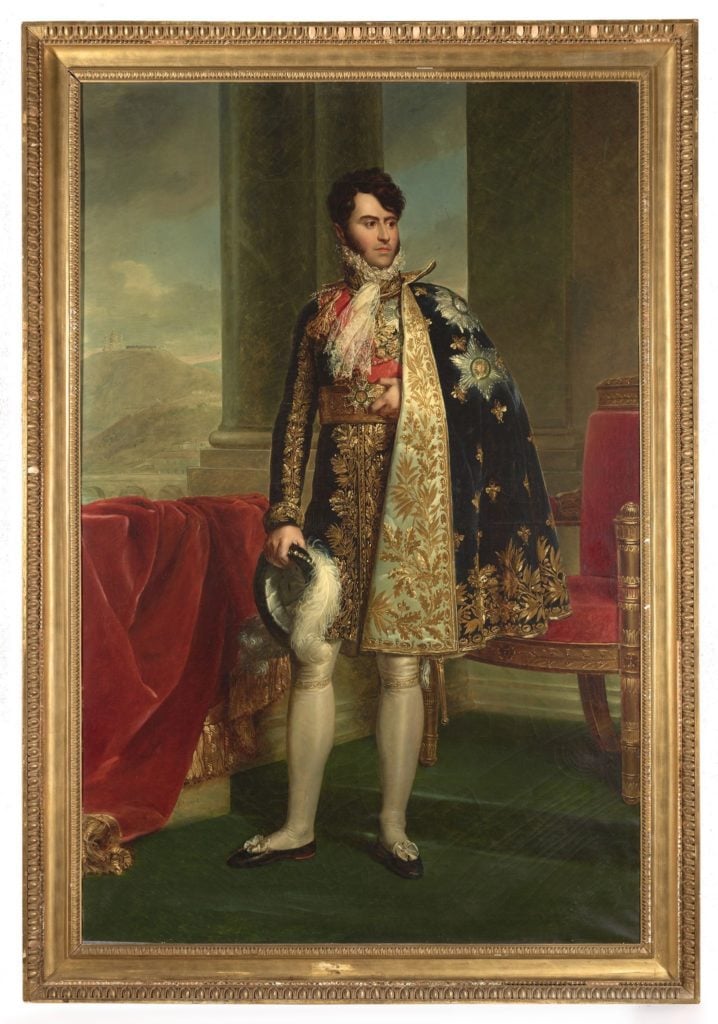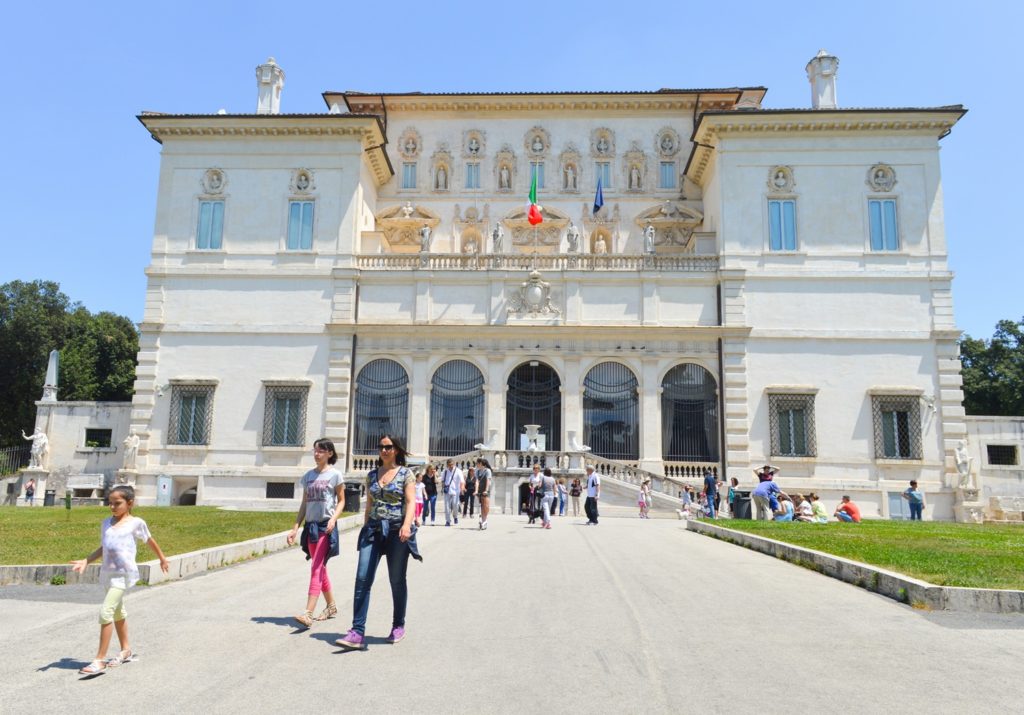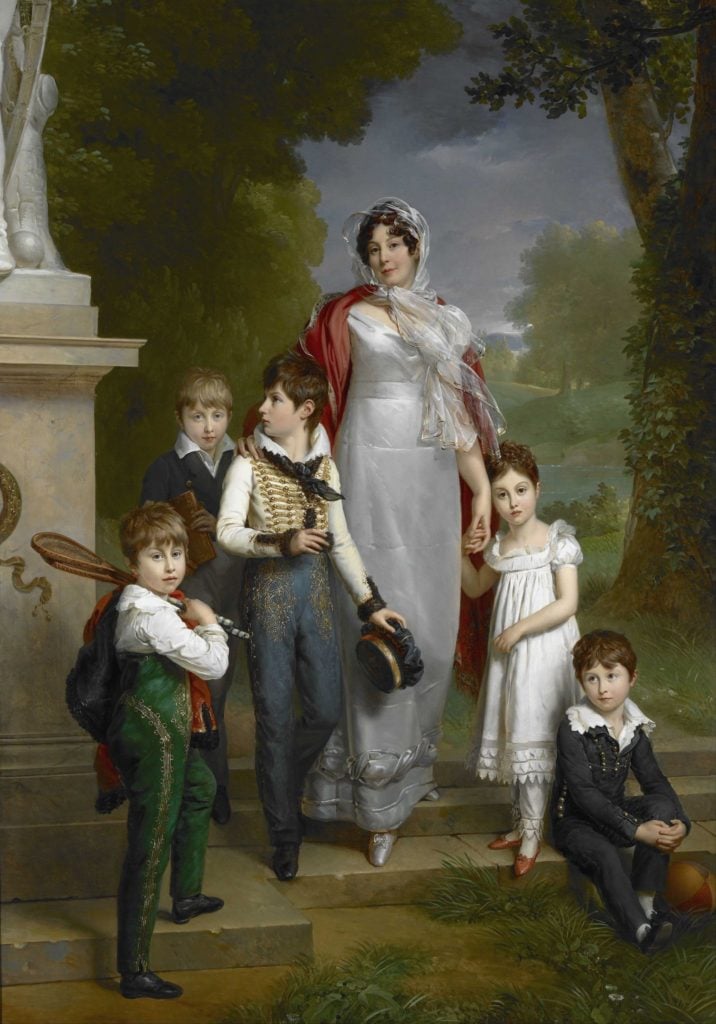Law & Politics
The Frick Touted Its Purchase of a Prized François Gérard Painting as Its ‘Most Significant’ in 30 Years—Then, Italy Asked for It Back
Italy claims it didn't realize the portrait's subject was an Italian prince.

Italy claims it didn't realize the portrait's subject was an Italian prince.

Sarah Cascone

In December, New York’s Frick Collection announced boldly that it had made the “most significant painting purchase in nearly 30 years,” a full-length portrait of Italy’s Prince Camillo Borghese by French artist François Gérard (1770–1837). artnet News dubbed it one of the year’s 10 biggest museum acquisitions of 2017.
Now, however, it appears that Italy is having second thoughts about the deal. The country is revoking the painting’s export license and demanding its return, calling the canvas an important piece of Italian cultural heritage. The painting, which dates to around 1810, has already been exported to the U.S. Italy claims the export license application only described the painting as a male portrait and that the identity of the sitter is what makes the work so significant to the country. (The subject’s name is written clearly on the back of the picture.)
Borghese was the brother-in-law of Napoleon, and a prominent art patron in a family full of them—the Galleria Borghese, the family’s villa in Rome, has been an art museum since the late 18th century and was frequently visited even before that. But while the villa and its famed Gian Lorenzo Bernini sculptures were sold to the Italian government in 1902, the Gérard painting remained in the hands of the Borghese family, unrestored and in its original frame.
The Borghese family’s collection is “among the most important in the history of Italian art,” Maria Vittoria Marini Clarelli, the head of the circulation department of the directorate-general of archaeology, fine art, and landscape at the Italian culture ministry in Rome, told the Art Newspaper. She claimed that the country only belatedly realized “the importance of the painting for national patrimony as a rare and significant document of the Napoleonic era in Italy.”

Galleria Borghese. Photo by Francisco Anzola on Flickr, Creative Commons Attribution 2.0 Generic (CC BY 2.0).
London gallery Robilant + Voena, which acquired the work from Borghese’s descendants, first sought an export license for the painting in February 2017, an application granted by Italy’s Bologna export office. On May 9 of this year, the Italian culture ministry’s directorate of archaeology, fine art, and landscape informed the Bologna office that the license should be revoked, a process that began May 16 and was finalized on June 14.
Art Recovery International, a company that helps mediate restitution claims, is representing the gallery as it looks to appeal the decision. “I am the first one to come to the aid of nation states to recover their cultural heritage,” Christopher Marinello, the company’s chief executive, told artnet News in an email. “As an Italian citizen, I’m particularly inclined to aid Italy’s efforts—but here, the dealer did everything he was required to do. The authorities let this one go and a lot of folks relied on that decision.”
The company recently helped resolve a similar case in Portugal, where the country claimed that an export license for a 15th-century work by Carlo Crivelli had been issued in error. The painting was sold overseas before Portugal attempted to recover the work, and the government ultimately agreed to give up its claim to the piece.
The purchase price for Portrait of Camillo Borghese has not been disclosed, but according to the artnet Price Database, Gérard’s record at auction is $2.25 million, achieved with Portrait of Louise-Antoinette-Scholastique Géhéneuc, Maréchale Lannes, duchesse de Montebello, with her children in 2005 at Sotheby’s New York.

François Gérard, Portrait of Louise-Antoinette-Scholastique Géhéneuc, Maréchale Lannes, duchesse de Montebello, with her children. This is the artist’s most expensive work sold at auction, fetching $2.25 million at Sotheby’s New York in 2005.
Frick chief curator Xavier F. Salomon told Art+Auction that while Portrait of Camillo Borghese was “very expensive; it’s not something we do very often or take very lightly,” it was nevertheless an easy decision to purchase the work. “I recognized immediately the quality of this portrait and how great it was, and so, I decided to move very decisively, without leaving the dealers much time to offer it to other people,” he said.
“With this striking painting, coming to the Frick with an unbroken provenance from the Borghese family, still on its original, unlined canvas, and in its original frame, the Frick has found a rare masterpiece to harmonize with its esteemed holdings,” said Frick board of trustees chairman Elizabeth Eveillard in a statement at the time of the sale, likening the museum’s collection to “a necklace assembled one precious pearl at a time.”
The Frick had not purchased a painting since the 1991 acquisition of Jean-Antoine Watteau’s Portal of Valenciennes. The new Gérard was originally set to make its U.S. debut at the Frick in “Luigi Valadier: Splendor in Eighteenth-Century Rome,” opening October 31. As curators finalized the exhibition design, however, they found that there was ultimately not a place for the work, and there are no longer set plans as to when it will go on view, or—if Italy has its way—if it will remain at the museum at all. The Frick declined to comment on the pending proceedings.